Abstract
1. In intact cats, dorsal horn cells sometimes respond to afferents entering the cord three or four segments more rostral. If dorsal roots near a segment have been cut for at least 4 weeks, many more cells respond to these long ranging afferents. Using extra- and intracellular recording, we examined the change in the nature of the connectivity of the long ranging afferents from dorsal roots L3 and L4 onto cells in L7. 2. In intact animals 33% of all cells in L7 recorded extracellularly and 48% of those recorded intracellularly exhibited responses to electrical stimulation of skin whose afferents entered the spinal cord over dorsal roots L3 and L4. Most of these responses had a long latency and followed high frequency stimulation poorly. 3. Thirty-eight to fifty-one days after cutting dorsal roots L5-S2, 76% of cells recorded intracellularly in L7 responded to long ranging afferents, in contrast to 48% in the intact cord. In these preparations 48% of all cells responded in less than 5 msec versus 12% in intact cats. Furthermore, 21% of the cells had natural receptive fields in the distant dermatome versus 1% in intact animals. 4. Chronic deafferentation of a segment increased the number of cells responding to afferents arriving over distal dorsal roots and increased the speed and power of the responses.
Full text
PDF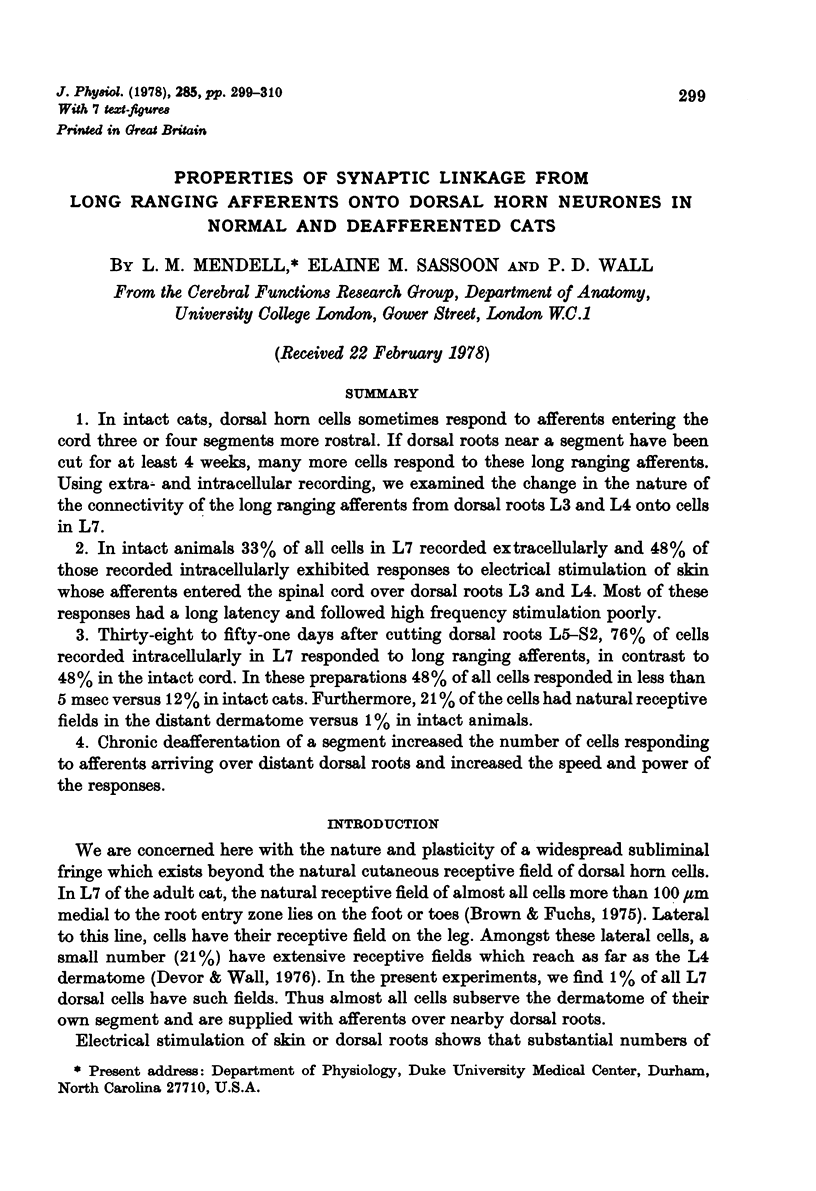
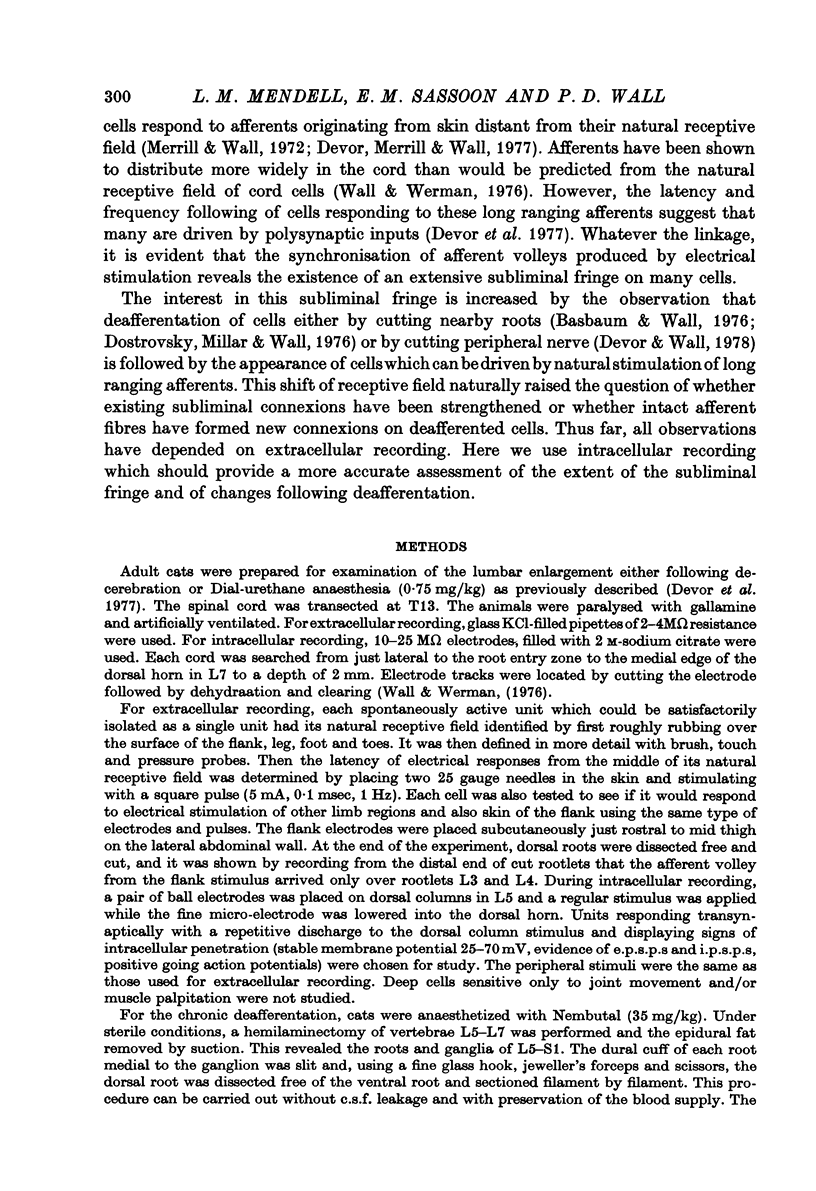
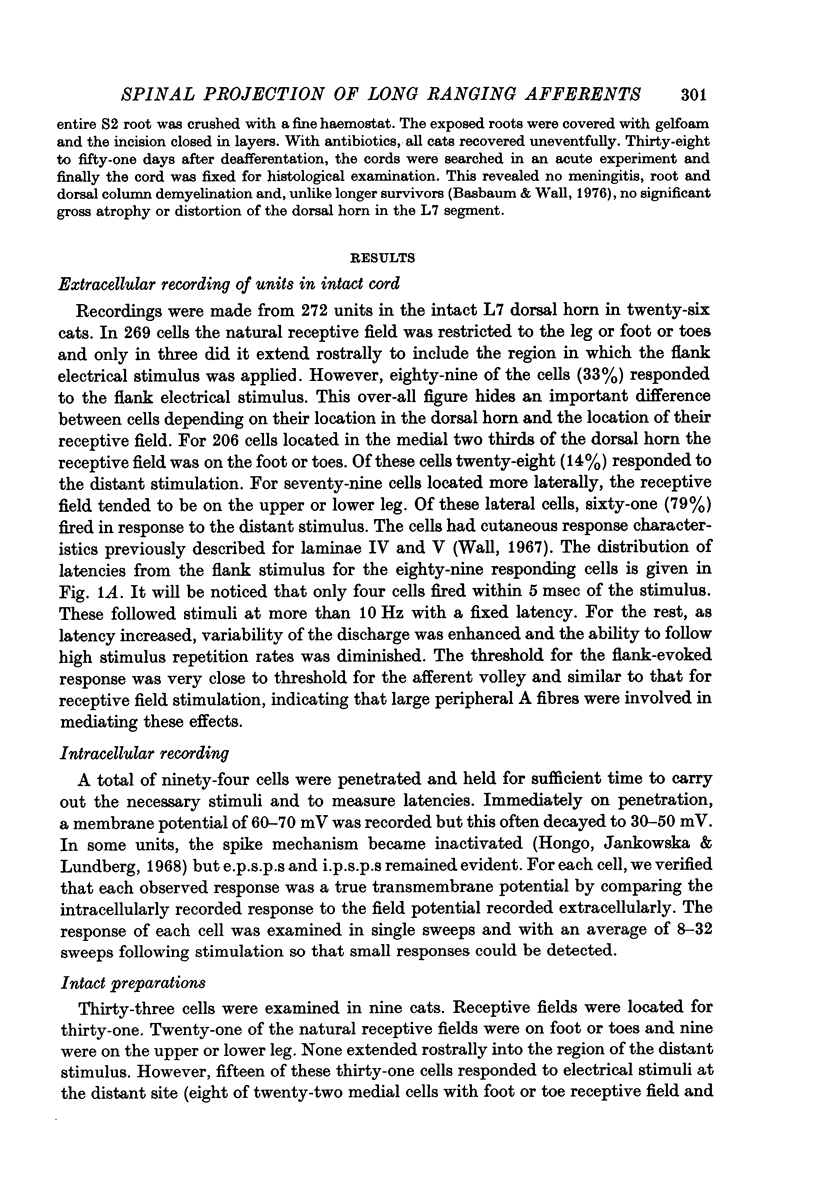
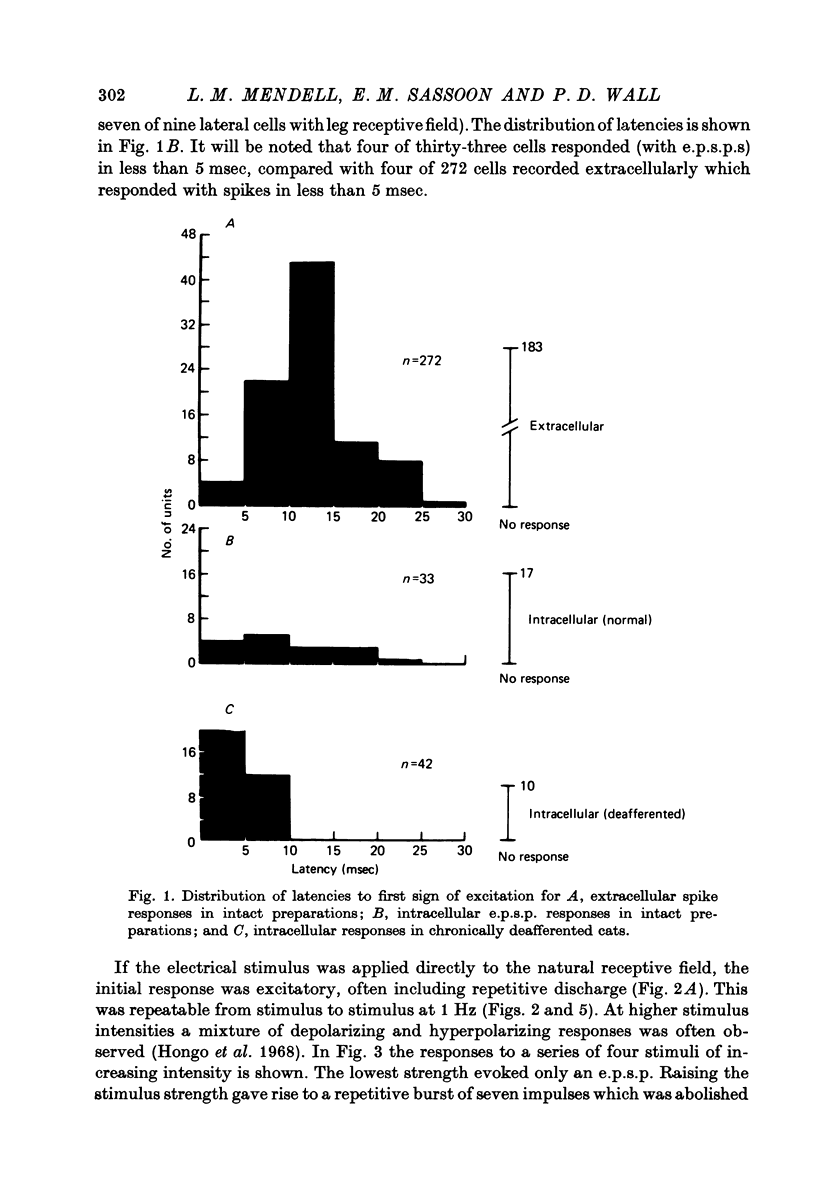
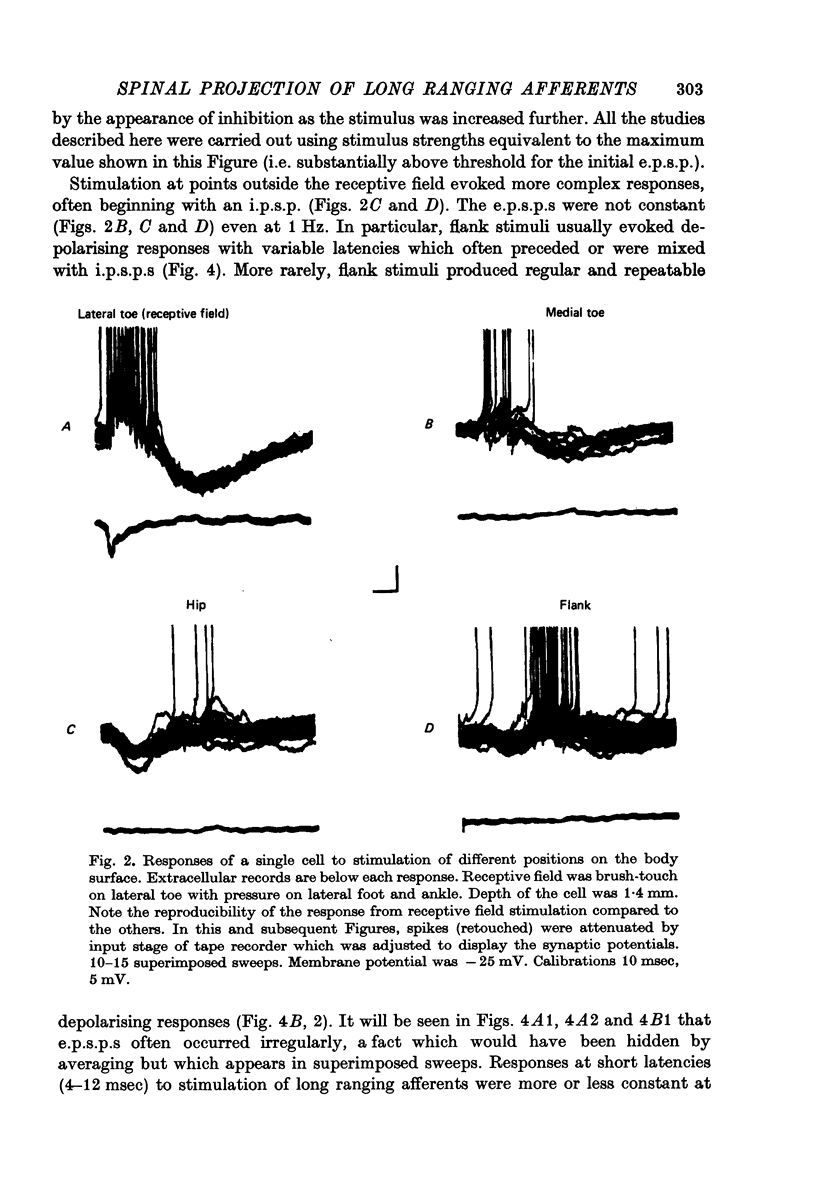
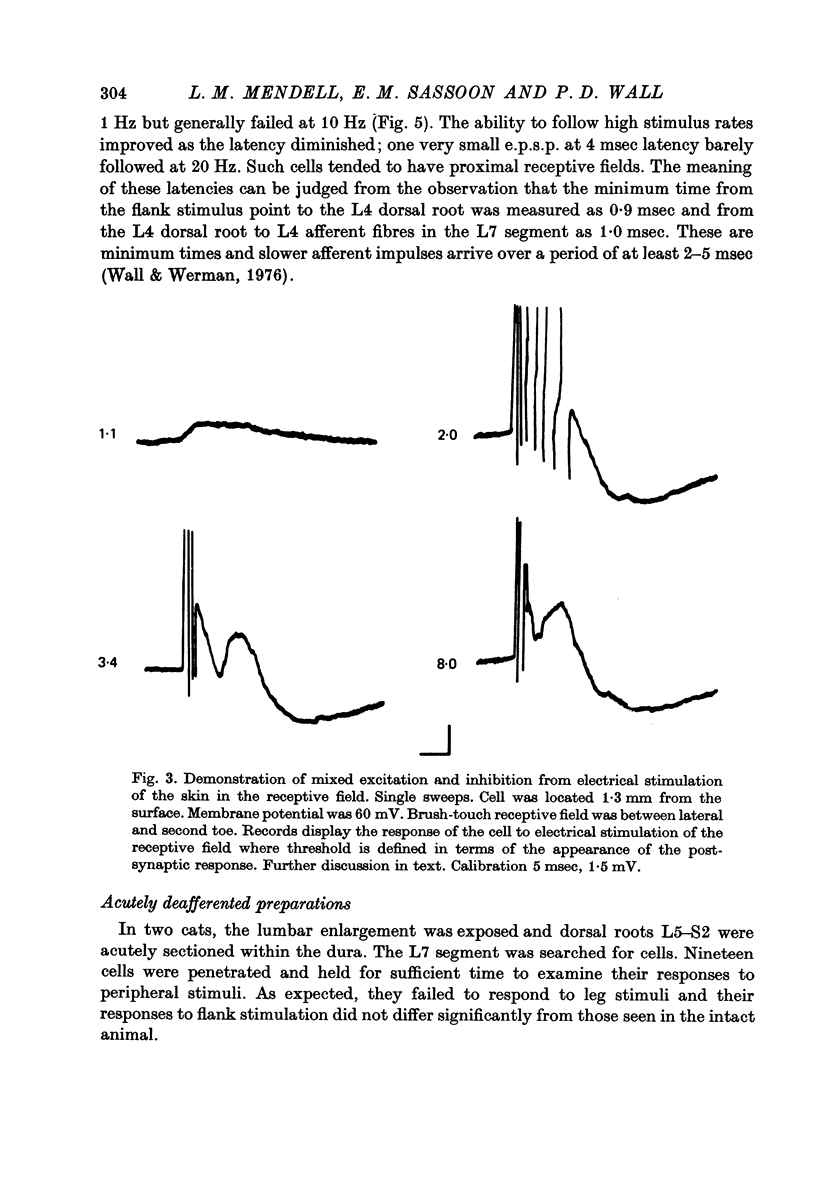
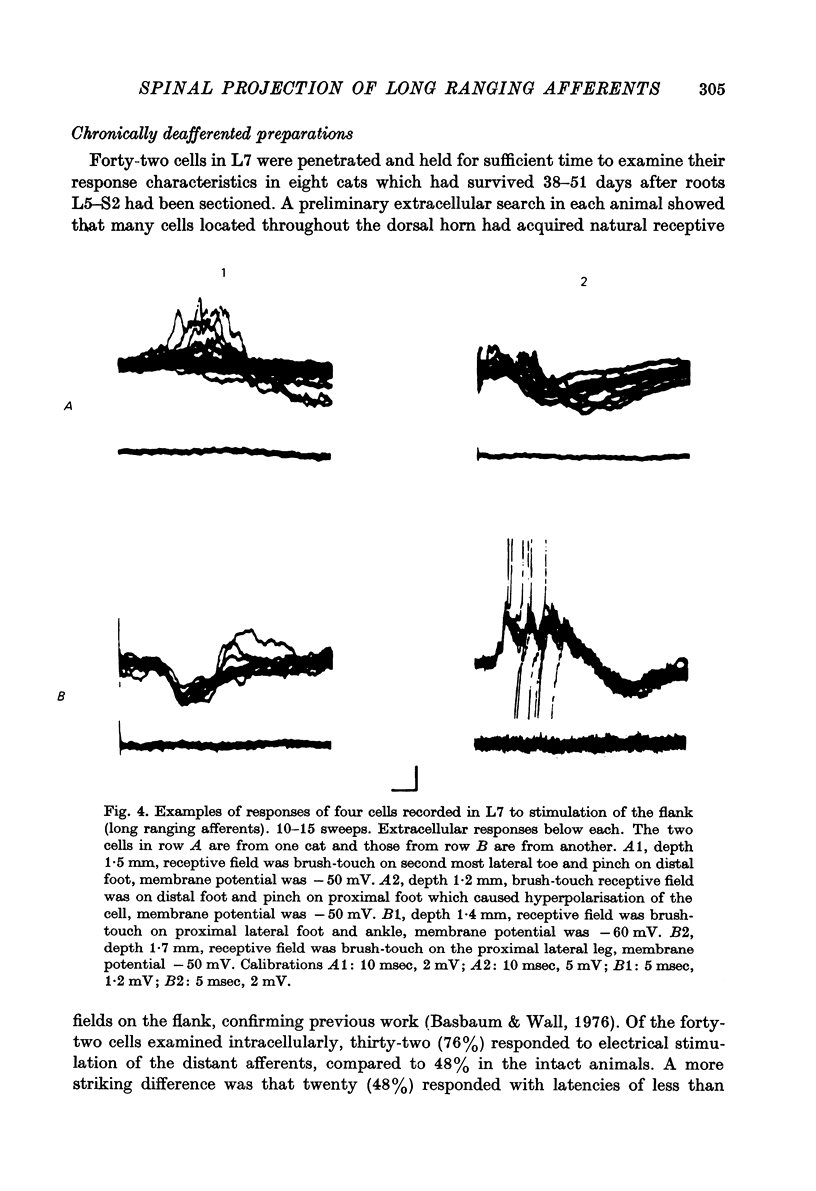
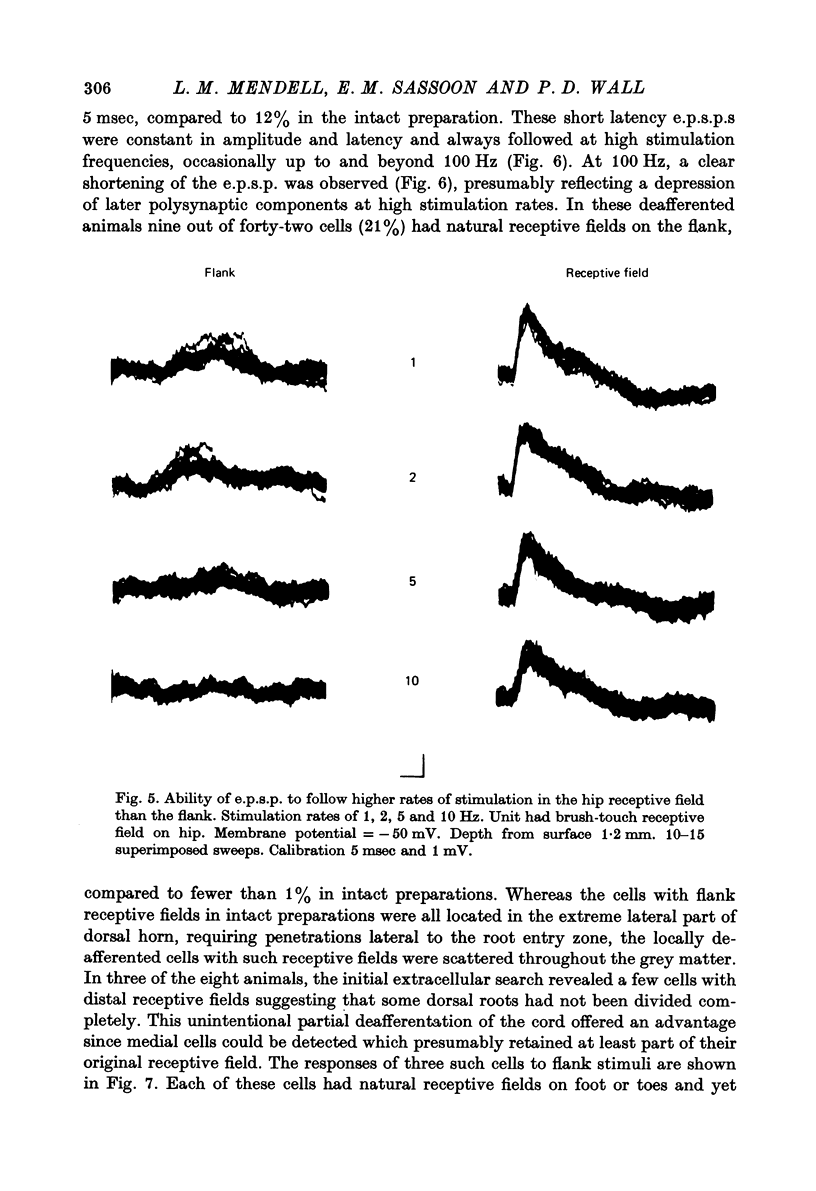
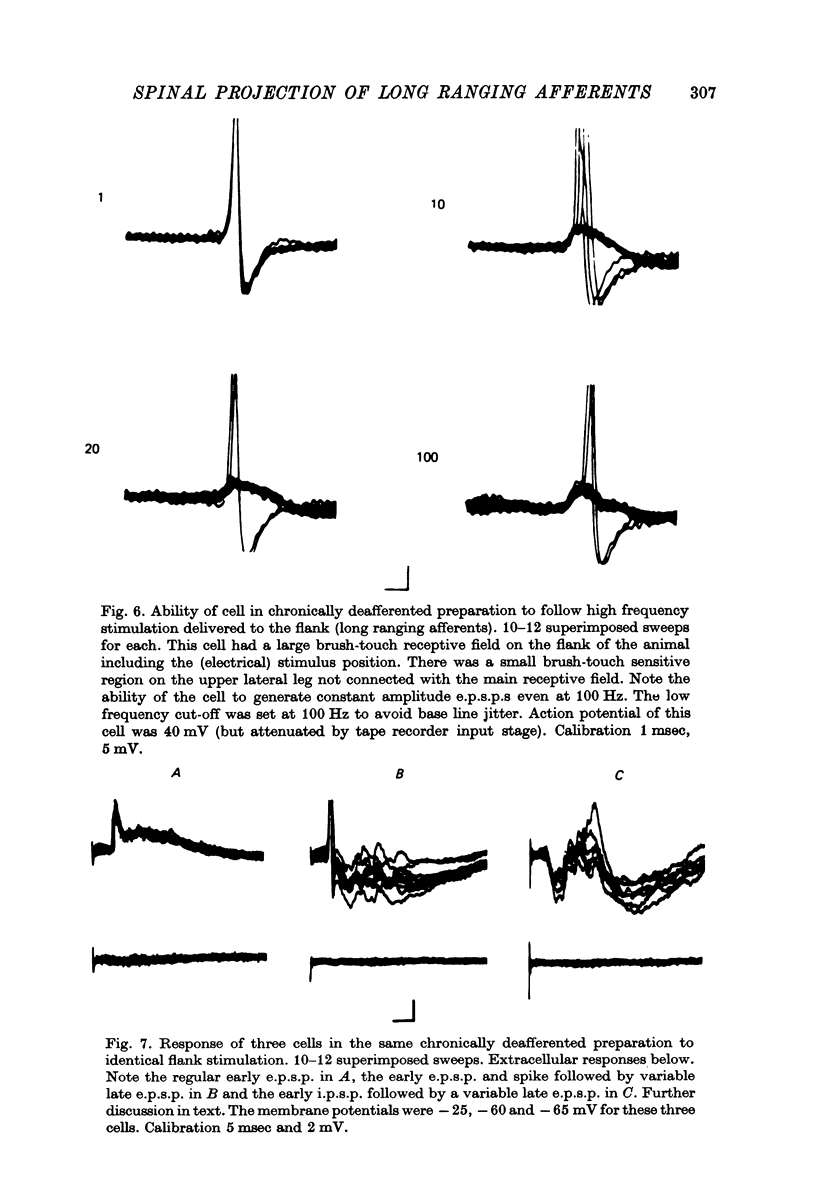
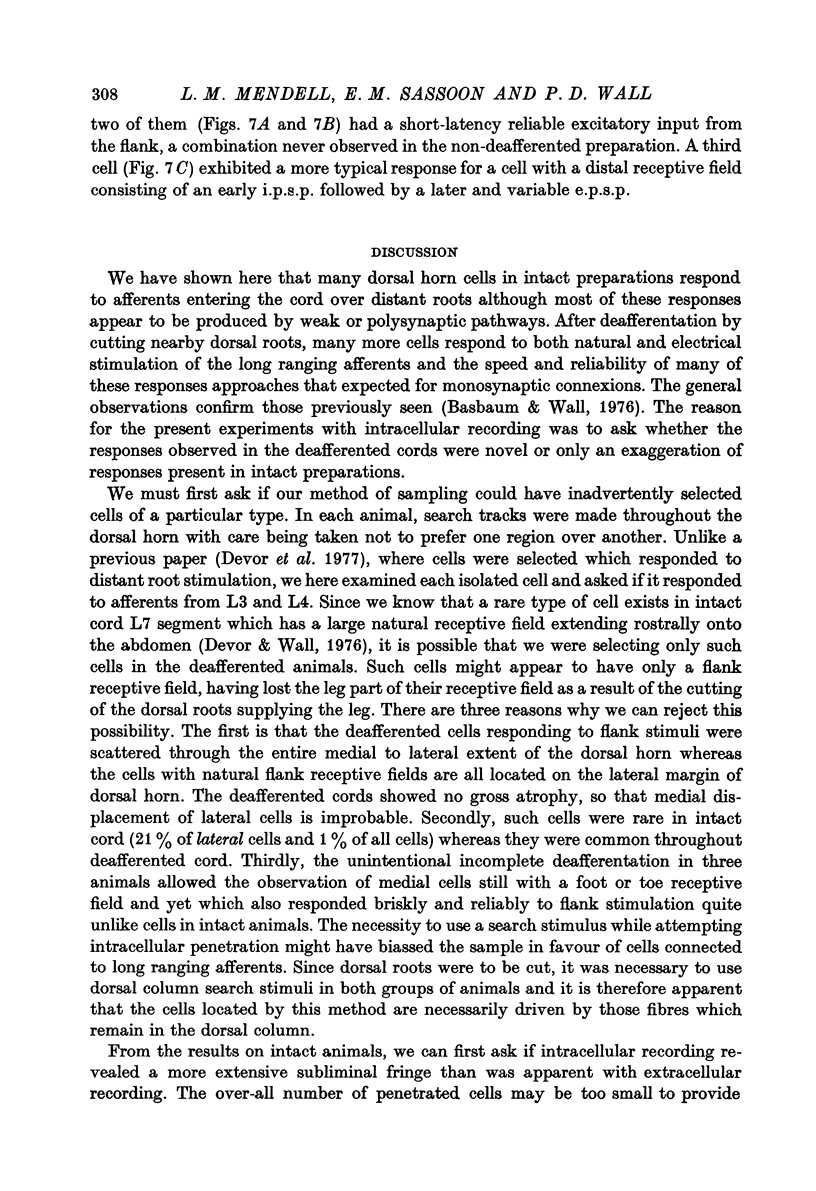
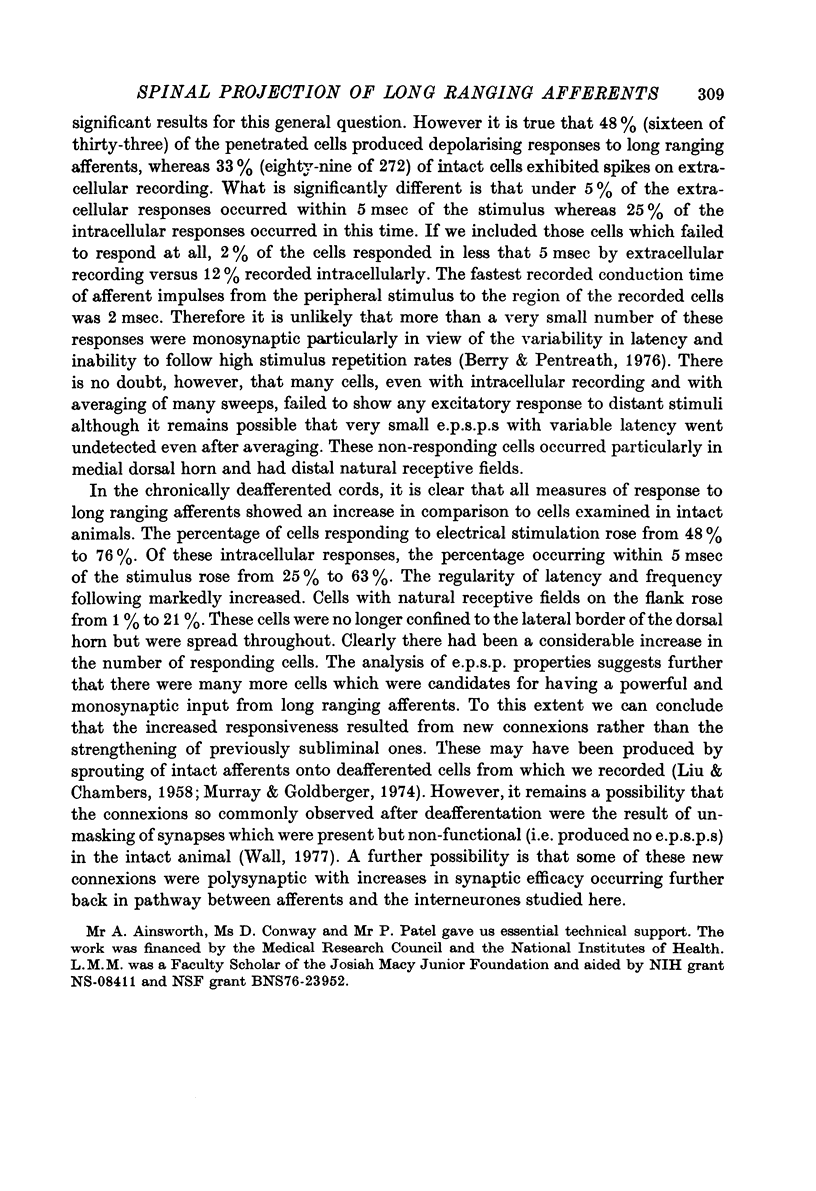
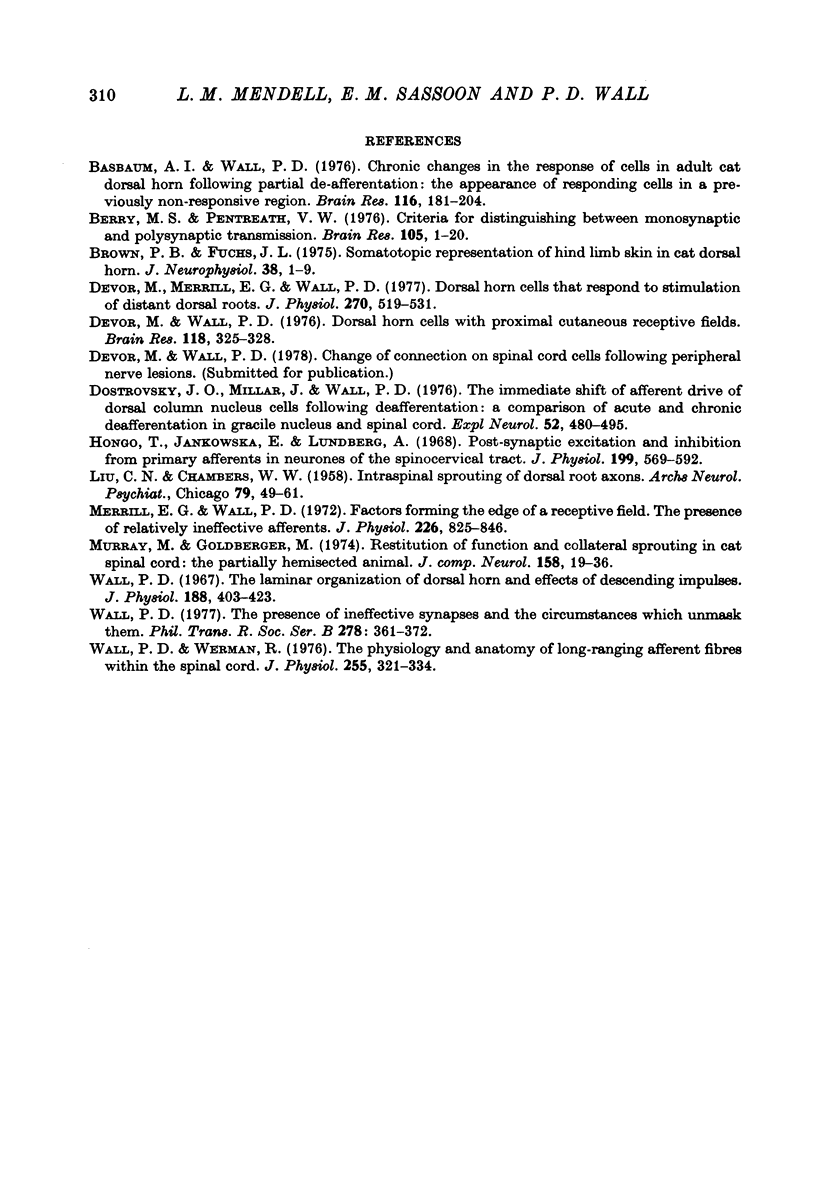
Selected References
These references are in PubMed. This may not be the complete list of references from this article.
- Basbaum A. I., Wall P. D. Chronic changes in the response of cells in adult cat dorsal horn following partial deafferentation: the appearance of responding cells in a previously non-responsive region. Brain Res. 1976 Nov 5;116(2):181–204. doi: 10.1016/0006-8993(76)90899-4. [DOI] [PubMed] [Google Scholar]
- Berry M. S., Pentreath V. W. Criteria for distinguishing between monosynaptic and polysynaptic transmission. Brain Res. 1976 Mar 19;105(1):1–20. doi: 10.1016/0006-8993(76)90919-7. [DOI] [PubMed] [Google Scholar]
- Brown P. B., Fuchs J. L. Somatotopic representation of hindlimb skin in cat dorsal horn. J Neurophysiol. 1975 Jan;38(1):1–9. doi: 10.1152/jn.1975.38.1.1. [DOI] [PubMed] [Google Scholar]
- Devor M., Merrill E. G., Wall P. D. Dorsal horn cells that respond to stimulation of distant dorsal roots. J Physiol. 1977 Sep;270(2):519–531. doi: 10.1113/jphysiol.1977.sp011966. [DOI] [PMC free article] [PubMed] [Google Scholar]
- Devor M., Wall P. D. Dorsal horn cells with proximal cutaneous receptive fields. Brain Res. 1976 Dec 17;118(2):325–328. doi: 10.1016/0006-8993(76)90719-8. [DOI] [PubMed] [Google Scholar]
- Dostrovsky J. O., Millar J., Wall P. D. The immediate shift of afferent drive to dorsal column nucleus cells following deafferentation: a comparison of acute and chronic deafferentation in gracile nucleus and spinal cord. Exp Neurol. 1976 Sep;52(3):480–495. doi: 10.1016/0014-4886(76)90219-3. [DOI] [PubMed] [Google Scholar]
- Hongo T., Jankowska E., Lundberg A. Post-synaptic excitation and inhibition from primary afferents in neurones of the spinocervical tract. J Physiol. 1968 Dec;199(3):569–592. doi: 10.1113/jphysiol.1968.sp008669. [DOI] [PMC free article] [PubMed] [Google Scholar]
- Merrill E. G., Wall P. D. Factors forming the edge of a receptive field: the presence of relatively ineffective afferent terminals. J Physiol. 1972 Nov;226(3):825–846. doi: 10.1113/jphysiol.1972.sp010012. [DOI] [PMC free article] [PubMed] [Google Scholar]
- Murray M., Goldberger M. E. Restitution of function and collateral sprouting in the cat spinal cord: the partially hemisected animal. J Comp Neurol. 1974 Nov 1;158(1):19–36. doi: 10.1002/cne.901580103. [DOI] [PubMed] [Google Scholar]
- Wall P. D. The laminar organization of dorsal horn and effects of descending impulses. J Physiol. 1967 Feb;188(3):403–423. doi: 10.1113/jphysiol.1967.sp008146. [DOI] [PMC free article] [PubMed] [Google Scholar]
- Wall P. D., Werman R. The physiology and anatomy of long ranging afferent fibres within the spinal cord. J Physiol. 1976 Feb;255(2):321–334. doi: 10.1113/jphysiol.1976.sp011282. [DOI] [PMC free article] [PubMed] [Google Scholar]


